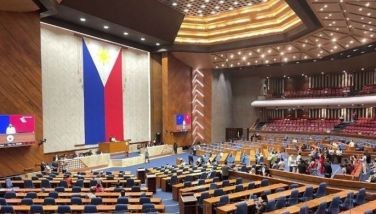Expanded maternity leave
My wedding ninang, Philippine Commission on Women (PCW) chairwoman Rhodora M. Bucoy, contacted me last week with good news about the signing by President Rodrigo Duterte of the 105-Day Expanded Maternity Leave Law or Republic Act 11210.
She knew that since I was once a Gender and Development (GAD) coordinator at UP Cebu in 2005 and 2006, I would be interested in writing about gender development and issues in this column.
The PCW is under the Office of the President whose main occupant is known for his misogynistic remarks in his public speeches. However, this has not deterred the commission from releasing a statement in January calling into account public officials who perpetuate misogyny, defined as “dislike of, contempt for, or ingrained prejudice against women.”
This followed a statement made by the president on December 30 when he claimed that he touched the private parts of their family helper when he was younger. “We call an end to sexism, whether in thought, language and actions, and an end in becoming instruments in perpetuating gender-based violence,” the PCW said in January.
But on February 20, the PCW found reason to be happy with the president after he signed the 105-Day Expanded Maternity Leave (EML) Law.
In a statement, the PCW said: “We welcome the signing of the law as an advance Women’s Month gift for Filipino women and families. We thank President Rodrigo Roa Duterte and the legislators who championed and defended the law, for finally heeding the call of women.”
The PCW also gave credit and thanks to “the women and men who supported and tirelessly lobbied for the expansion of the existing maternity leave benefits for almost 11 years since the proposal was first introduced in Congress.”
The EML law extends the current 60-day (78 days for caesarian section delivery for women workers in the private sector) paid maternity leave to 105 days, with an option to extend for additional 30 days of unpaid leave. Under the law, additional 15 days paid maternity leave shall also be granted to female solo parents.
The father of the child may also have seven of the 105 days, in addition to the existing seven days paternity leave granted to him under Republic Act 8187. Where no father is around, the seven days may be given to an alternate caregiver chosen by the mother. That alternative caregiver may be a relative or current partner of the mother.
This EML law applies to both the government and private sector employees, including those in the informal economy.
In a statement, PWC chairwoman Bucoy said that the law recognizes and acknowledges women’s vital role and contribution to the labor force, while giving them the opportunity to exercise their unique reproductive role. “It gives women enough time and resources to recuperate, regain her full strength, and nurture her child after giving birth,” Bucoy said.
Concerns have been raised, especially by employers, that maternity leave legislation may discourage employers from hiring women of reproductive age or may put the latter at a disadvantage when it comes to promotion. This stems from the notion that a paid maternity leave eats into the productivity of the company and is costly in terms “unworked” salary.
While there are potential drawbacks from the law like interruptions in company productivity, studies show that women who enjoy maternity leaves tend to be loyal to their companies. Yet the most important basis for maternity leave legislation is the finding that expansions in leave coverage improved children's outcomes.
In other words, maternity leave legislation is an investment for the future.
- Latest

























